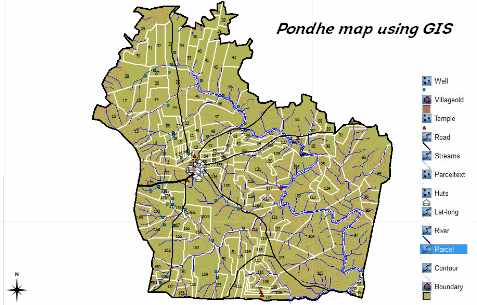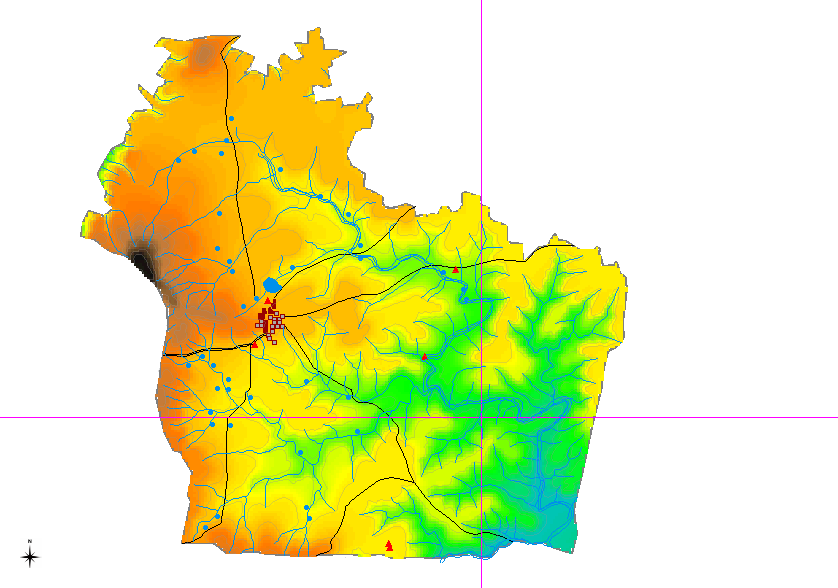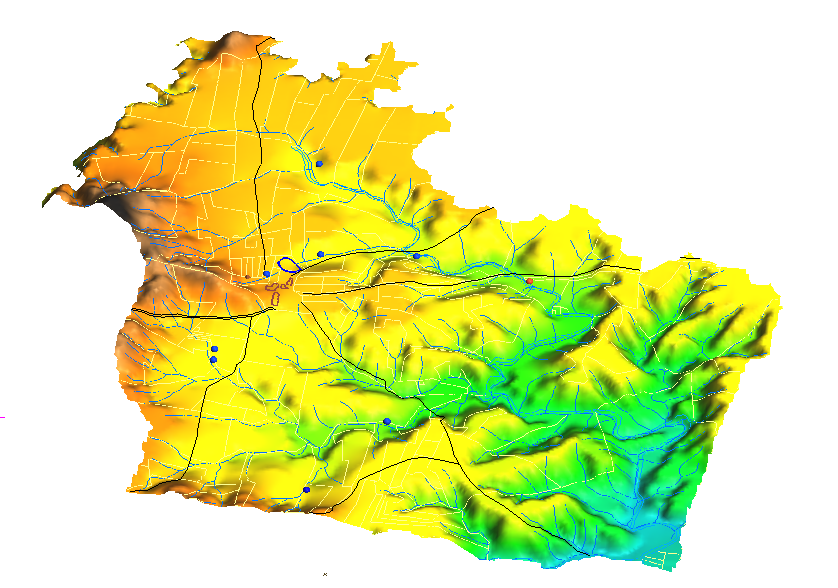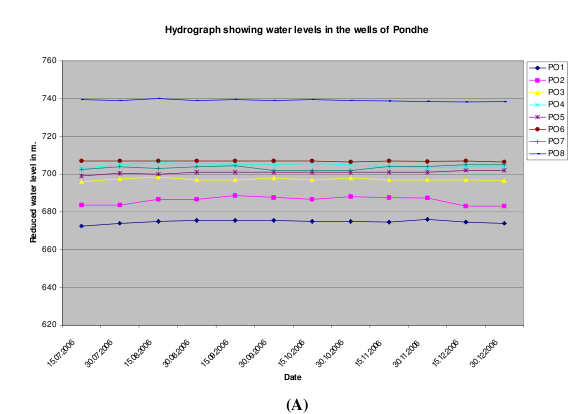- Some wells do not show any significant water level fluctuation.
- Other wells clearly show water levels fluctuations, beginning with a rise at the start of the monsoon and then a drop going into the dry season.

Pondhe is a typical village from eastern parts of Pune district of Maharashtra state. However, the Ponda area is not typical of the region where rainfall vagaries and large-scale groundwater overabstraction have plagued villages for the last ten-twelve years.The Ponda watershed is located about 30 km from Saswad town, the headquarters of Purandar taluka. Ponda village can be best approached by the Jejuri-Yavat road, branching off from the Malshiras village. The approach to Jejuri is through Saswad. The base map of the watershed prepared using Survey of India Toposheet numbered 47/J/7/NW. Ponda village is situated at the bottom of the broad ridge marking the western divide of the watershed. The area is bounded by the latitudes 18º 25′ N and 18º 27’30″N and by the longitudes 74º 15′ E and 74º 17’30” E.

The project area covers a microwatershed just under 8.41 km2 (about 841 hectares) and slopes towards the east. The most obvious features in the watershed are a cluster of farms along the margins of the watershed. The watershed is somewhat anomalous to the regional trend of microcatchments in this area. The area actually runs parallel to the divide between the Bhima and Karha river basins and forms a part of the Karha system. Most other sub-catchments of the Karha drain southwards and southeastwards, but locally, the Ponda sub-basins follow an anomalous pattern that is often discordant to the regional hydrology.

Map with function of varying height(Elevation Map)

Elevation Model of Pondhe
Well Monitoring
There are many wells in the area, primarily because it is a low rainfall area. However, the area has witnessed enormous development of groundwater resources through dug wells and bore wells. All these wells are numbered appropriately and base information like latitude/longitude, elevation, diameter and depth is collected for each. In ponde there are 16 wells which are under observation.

| Date | Inflow from ‘V’ notch in inches | Discharge in lit/min |
| 30.03.06 | 9 | 2095.80 |
| 15.04.06 | 7 | 1118.19 |
| 30.04.06 | 7.5 | 1328.60 |
| 15.05.06 | 8 | 1561.24 |
| 30.05.06 | 8.5 | 1816.73 |
| 30.08.06 | 13 | 5255.34 |
| 15.09.06 | 16 | 8831.67 |
| 30.09.06 | 15 | 7515.72 |
| 15.10.06 | 12 | 4302.25 |
| 30.10.06 | 8 | 1561.23 |
| 15.11.06 | 7.5 | 1328.60 |
| 30.11.06 | 6 | 760.53 |
| 15.12.06 | 5 | 482.13 |
| 30.12.06 | 6 | 760.54 |
Based on these discharge values, a stream hydrograph was prepared and the total volume of water generated from September to December, 2006 was calculated. The total volume of water generated is about 712333 m3 , which over an area of some 1000 hectares is about 71 mm. As latest data comes in, this figure will be refined and the total discharge is expected to be in excess of 100 mm equivalent of the depth of water over the watershed area.
| Well no. | Static water level in (m) | Pumping Time | Totaldraw down (m) | Transmisivity | storativity % | Recovery | specific Capacilty lit per min/m |
| PO3 | 7.55 | 30 | 0.45 | 71.82 | 0.049 | 0.30m in 60 min. | 69.53 |
| PO7 | 5.7 | 35 | 0.67 | 114.82 | 0.089 | Very slow recovery; not measurable in 60 min. | — |
| PO9 | 3.02 | 100 | 1.47 | 45.52 | 0.074 | 0.12m in 90 min. | 101.09 |